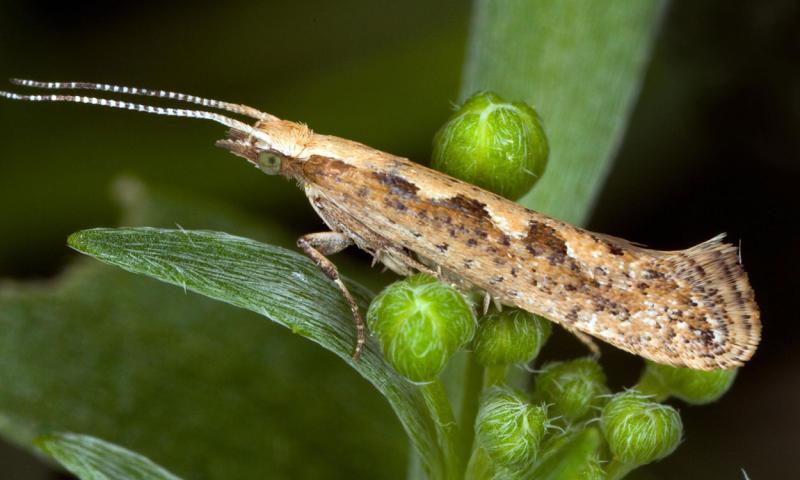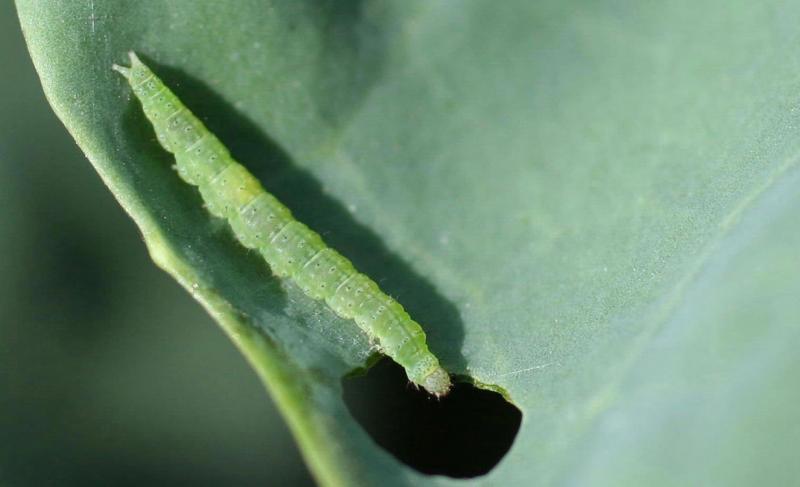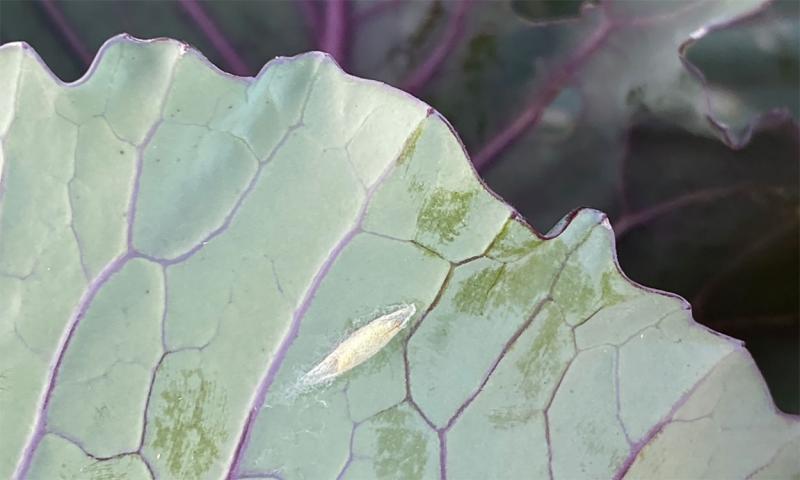
Originally Submitted: June 8, 2021
While examining my garden this week, I observed diamondback moth caterpillars on my cabbage. Diamondback moth caterpillars primarily feed on cole crops (e.g., broccoli, Brussel sprouts, cabbage, cauliflower, kale, etc.).
In South Dakota, there can be three-to-five generations of diamondback moths each year. Therefore, it’s very likely that additional caterpillars will be observed before the end of the season.
Scouting and Identification
Diamondback moth caterpillars feed on leaves, leaving behind irregular-shaped holes. At first glance, it may seem like defoliation is happening without any caterpillars present, because they feed on the underside of the leaf. If the caterpillars are disturbed, they will violently wriggle and often drop from the plant using a strand of silk. First-instar larvae are leaf miners, but most of this injury will go unnoticed. Other early-life stages will leave behind transparent spots on the leaf. This type of defoliation is referred to as windowpane injury.

Diamondback moths are small with brown-gray coloration and a one-inch wingspan. When at rest, the moths have a broad cream or light-brown band from the head to the end of the front wings. There are often constrictions along the band that will form one or more light-colored diamonds (Figure 1). While at rest, these moths will appear very slender, as they have their wings folded close to their bodies with the ends of the wings curving upwards.
The caterpillars are light-green with a light-green or light-brown head. At maturity, the caterpillars are 3/8 of an inch long, much smaller than the cabbage whites. The caterpillars have four pairs of prolegs (legs in the middle of their bodies). They also have one pair of prolegs at the end of their body that form a “V” shape, as they are almost always extended backwards. When disturbed, the caterpillars will make a loop shape with their bodies. The caterpillar’s body is narrower at the head and wider near the end of the body.

When the diamondback moth caterpillars reach their last instar, or growth stage, they will spin a silken web and often attach themselves to the bottom of a leaf (Figure 3). They will then form a silken pupa and pupate on the undersides of the leaves. If you observe any pupae on a plant, remove and destroy them.
Management
For gardens, the easiest way to manage diamondback moths is to remove caterpillars or pupae by hand and destroy them. If large populations are present, using an insecticidal powder on the plants may reduce feeding. To effectively reach the populations, the bottoms of the leaves need to be treated. Since these caterpillars are feeding on the plant parts gardeners harvest, make sure to pay attention to pre-harvest intervals on the label. The pre-harvest interval is the amount of time you must let pass between applying the pesticide and harvesting the crop.


